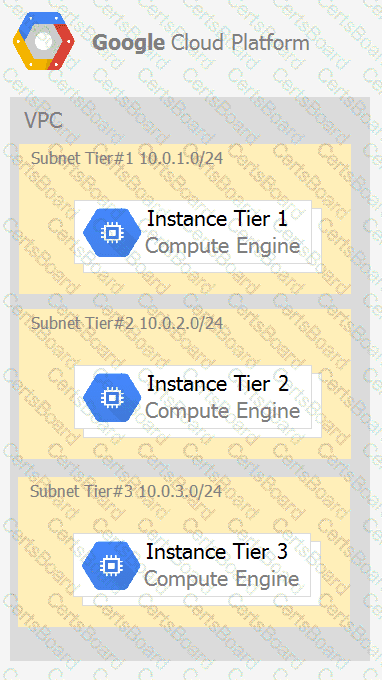You are configuring service accounts for an application that spans multiple projects. Virtual machines (VMs) running in the web-applications project need access to BigQuery datasets in the crm-databases project. You want to follow Google-recommended practices to grant access to the service account in the web-applications project. What should you do?
You are hosting an application on bare-metal servers in your own data center. The application needs access to Cloud Storage. However, security policies prevent the servers hosting the application from having public IP addresses or access to the internet. You want to follow Google-recommended practices to provide the application with access to Cloud Storage. What should you do?
You will have several applications running on different Compute Engine instances in the same project. You want to specify at a more granular level the service account each instance uses when calling Google Cloud APIs. What should you do?
You are building an application that will run in your data center. The application will use Google Cloud Platform (GCP) services like AutoML. You created a service account that has appropriate access to AutoML. You need to enable authentication to the APIs from your on-premises environment. What should you do?
You have developed an application that consists of multiple microservices, with each microservice packaged in its own Docker container image. You want to deploy the entire application on Google Kubernetes Engine so that each microservice can be scaled individually. What should you do?
(Your company is modernizing its applications and refactoring them to containerized microservices. You need to deploy the infrastructure on Google Cloud so that teams can deploy their applications. The applications cannot be exposed publicly. You want to minimize management and operational overhead. What should you do?)
Your company is moving its entire workload to Compute Engine. Some servers should be accessible through the Internet, and other servers should only be accessible over the internal network. All servers need to be able to talk to each other over specific ports and protocols. The current on-premises network relies on a demilitarized zone (DMZ) for the public servers and a Local Area Network (LAN) for the private servers. You need to design the networking infrastructure on
Google Cloud to match these requirements. What should you do?
You need to select and configure compute resources for a set of batch processing jobs. These jobs take around 2 hours to complete and are run nightly. You want to minimize service costs. What should you do?
Your company has a 3-tier solution running on Compute Engine. The configuration of the current infrastructure is shown below.

Each tier has a service account that is associated with all instances within it. You need to enable communication on TCP port 8080 between tiers as follows:
• Instances in tier #1 must communicate with tier #2.
• Instances in tier #2 must communicate with tier #3.
What should you do?
(You are migrating your on-premises workload to Google Cloud. Your company is implementing its Cloud Billing configuration and requires access to a granular breakdown of its Google Cloud costs. You need to ensure that the Cloud Billing datasets are available in BigQuery so you can conduct a detailed analysis of costs. What should you do?)


